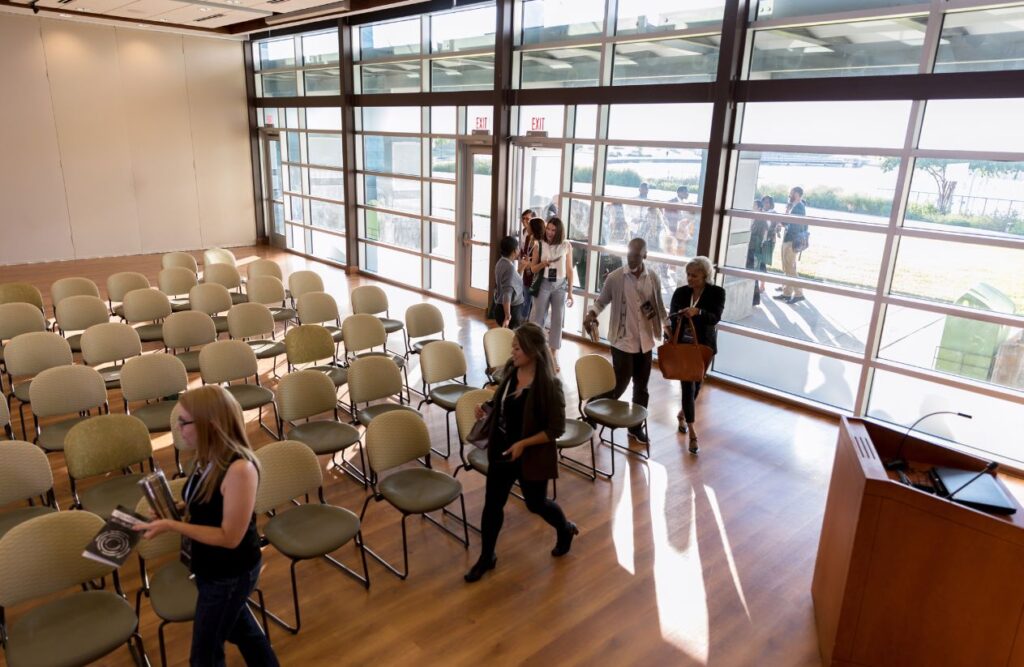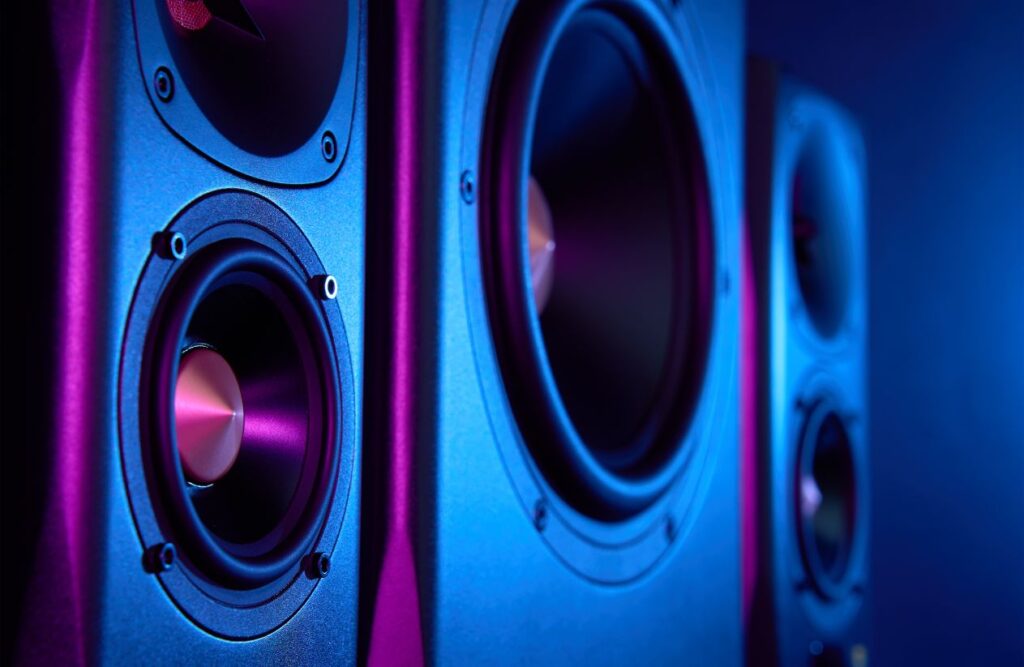Table of Contents
Venue Logistics Tips: Understanding Your Audience and Their Needs

As a tech-savvy professional event planner, it’s crucial to dive deep into understanding the profile, preferences, and necessities of your audience.
This knowledge serves as the backbone for orchestrating an event that resonates well with the attendees, ensuring their engagement, satisfaction, and memorable experiences.
This section sheds light on various strategies to decode your audience’s needs effectively.
Identifying Audience Demographics
The first step towards understanding your audience is to gather detailed demographic information.
This includes age ranges, professional backgrounds, technological proficiency, interests, and geographical locations.
Tools like pre-event surveys, social media analytics, and registration data can provide invaluable insights.
For a tech-savvy audience, consider their familiarity with the latest digital tools and platforms.
This information will guide you in selecting the right technology to facilitate participation, networking, and content delivery that matches your expectations.
Assessing Expectations and Preferences
Beyond demographics, gauging the expectations and preferences of your audience is essential.
What do they aim to achieve by attending your event? Networking opportunities, learning new skills, or discovering the latest trends in their field could be among their objectives.
For a technologically adept crowd, interactive sessions, live demos of cutting-edge solutions, and opportunities for hands-on experiences might rank high on their list of expectations.
Utilizing platforms that allow for real-time feedback and Q&A sessions can further tailor the event experience to match audience desires.
Leveraging Technology to Enhance Experience
In today’s digital age, incorporating technology into your event is non-negotiable, especially for a tech-savvy audience.
Use this to your advantage by deploying smart event apps, virtual and augmented reality experiences, and AI-driven networking tools.
These technologies not only streamline event logistics but also add an element of excitement and innovation, significantly boosting attendee engagement.
Additionally, ensure your venue is equipped with robust Wi-Fi and charging stations to keep everyone connected. Lastly, offering digital swag, such as online course subscriptions or e-books, can create a lasting impression.
Understanding your audience and their needs is a dynamic process that requires ongoing attention and adaptation.
By focusing on these areas, you will be well-equipped to design events that not only meet but exceed the expectations of a tech-savvy professional crowd, ensuring successful and impactful gatherings.
Mastering the Art of Space Optimization

Maximizing your venue’s space isn’t just about squeezing in as many attendees as possible.
It’s about creating an environment that enhances the event experience for everyone involved, from participants to speakers, and yes, even the crew working behind the scenes.
As a tech-savvy professional event planner, you understand the importance of leveraging technology and innovative strategies to ensure every square inch of your venue is utilized effectively.
Here are some key strategies to help you master the art of space optimization.
Implementing Smart Layouts and Flow Management
The first step in space optimization is designing smart layouts that facilitate smooth flow and interaction among attendees.
Utilize CAD (Computer-Aided Design) software or specialized event planning tools to create accurate floor plans.
These digital tools allow you to experiment with different layouts virtually, without the need for physical setups, saving you time and resources.
Consider the placement of stages, seating, booths, and other key areas to ensure there’s enough space for foot traffic while avoiding bottlenecks.
Incorporate AI-driven predictive analytics to forecast attendee movement patterns, enabling you to make data-informed decisions about layout adjustments.
Leveraging Technology for Enhanced Space Utilization
In today’s digital era, the use of cutting-edge technology is paramount in optimizing event space.
Augmented Reality (AR) and Virtual Reality (VR) can provide virtual tours of the venue to attendees even before the event starts, helping them navigate the space more efficiently.
For multi-purpose areas, consider employing digital signage and interactive kiosks that can adapt to different segments of the event, directing attendees to various sections of the venue as needed.
RFID (Radio Frequency Identification) and NFC (Near Field Communication) technologies can be used to track attendee movements and preferences, offering invaluable insights for future event planning.
Adapting to Hybrid Event Models
The shift towards hybrid events—combining in-person and virtual experiences—offers a unique opportunity for space optimization.
By extending the event beyond the physical venue through live streaming and virtual platforms, you can engage a wider audience without the need for a larger physical space.
This approach not only reduces crowding but also enhances accessibility and inclusivity. Ensure your venue is equipped with high-speed internet and the necessary AV infrastructure to support seamless hybrid executions.
Incorporating virtual reality experiences can also enrich the attendee experience, allowing remote participants to feel as though they’re right there with you.
Mastering the art of space optimization requires a blend of creativity, technology, and strategic planning.
By implementing these strategies, you can transform any venue into an efficient, engaging, and inclusive environment that leaves a lasting impression on all attendees.
Remember, the goal is not just to fit people into a space but to create a memorable experience that resonates with them long after the event concludes.
Tech Gear and Sound Systems: Ensuring Quality and Compatibility

Ensuring your event has the right tech gear and sound systems is crucial for delivering a seamless experience for attendees.
As a tech-savvy professional event planner, it’s your job to understand not just what equipment is needed, but how to guarantee its quality and compatibility with the venue’s existing infrastructure.
Below, we delve into strategies to help you navigate these technical waters with expertise.
Choosing the Right Equipment
The first step in ensuring the success of your event’s technical aspects is selecting the right equipment.
This means considering the size of your venue, the nature of your event, and the specific needs of your presenters or entertainers.
For instance, a corporate conference might require high-quality lapel microphones and projectors for presentations, while a live concert would need robust speakers and mixing boards.
Always consult with technicians or audio-visual (AV) professionals when making these decisions. They can provide insights into the most reliable brands and models that suit your event’s requirements.
Compatibility Checks
Once you’ve selected your tech gear and sound systems, the next step is to ensure compatibility with the venue’s existing setup.
This involves a detailed technical run-through, ideally conducted with the venue’s own AV team.
During this process, check every component—from microphones to projectors and lighting systems—to confirm that they integrate seamlessly with the venue’s sound and visual infrastructure.
Pay special attention to connectivity issues, such as whether the equipment supports the latest HDMI standards or if older components require adapters.
Maintaining Quality Throughout the Event
Finally, maintaining the quality of your tech gear and sound systems during the event is paramount.
This includes having dedicated technicians on-site to manage any technical hiccups and conducting regular sound checks to ensure audio clarity and volume levels are optimized for your audience.
It’s also wise to have backup equipment ready, just in case. Whether it’s an extra set of microphones or a spare projector, being prepared for technical malfunctions can make the difference between a minor setback and a major disruption.
By meticulously choosing the right equipment, conducting thorough compatibility checks, and maintaining quality control throughout the event, you can ensure that your event’s tech and sound systems contribute positively to the overall experience.
Remember, the goal is not just to impress with high-tech gear but to create a smooth, uninterrupted flow that enhances the event’s content and engages your audience.
Transportation and Accessibility: Keeping Your Guests Connected

Ensuring seamless access to your event location is not just about providing a map; it’s about leveraging technology to smooth out any potential transportation hitches for your attendees.
In the digital age, guests appreciate having all the necessary information at their fingertips, from live traffic updates to public transport schedules and parking availability.
Integrate Real-Time Transport Data
One of the most innovative ways to keep your guests in the loop is by integrating real-time transportation data into your event app or website.
This includes live updates on public transportation schedules, delays, and even ride-sharing options.
By partnering with local transit apps or using APIs from services like Google Maps, you can offer your attendees a hassle-free way to plan their journey to and from your venue.
This approach not only showcases your commitment to guest convenience but also underlines your tech-savvy planning skills.
Streamline Parking Solutions
Parking can be a significant pain point at events, especially in urban locations. Invest in smart parking solutions that allow guests to reserve and pay for their parking spots in advance.
Utilize technology that can guide them to the nearest parking lot with available spaces on the day of the event.
Creating a seamless parking experience reduces stress and improves the overall perception of your event right from the start.
Leverage Accessibility Features
Accessibility should never be an afterthought. Ensure that your transportation and accessibility plans consider the needs of all guests, including those with disabilities.
This includes providing information on wheelchair-accessible transportation options, parking spaces, and routes within the venue itself.
Technology can aid in this regard as well, with apps and websites highlighting the accessible features of your event location, ensuring everyone has an equal opportunity to enjoy what you have planned.
By focusing on transportation and accessibility, you’re not only eliminating potential barriers for your attendees but also enhancing their overall experience.
In a world where convenience and efficiency are highly valued, integrating these logistical elements with the help of technology positions your event as modern, thoughtful, and impeccably planned.
Safety and Security: A Top Priority for Event Success

Ensuring the safety and security of all attendees, staff, and participants is paramount in the planning and execution of any event.
As a tech-savvy professional event planner, integrating advanced security systems and protocols into your venue logistics strategy not only provides peace of mind but also enhances the overall event experience for everyone involved.
Advanced Security Technologies
In today’s digital age, leveraging cutting-edge technology can significantly bolster your event’s security measures.
Implementing high-definition CCTV cameras, RFID (Radio-Frequency Identification) tags for attendee tracking, and biometric access controls for restricted areas are essential components of a modern security setup.
These technologies not only prevent unauthorized access but also ensure a quick response to any potential security breach, keeping safety risks at a minimum.
Comprehensive Emergency Planning
Preparation is key to managing emergencies effectively. Developing a detailed emergency response plan tailored to the specific needs of your event venue is crucial.
This includes establishing clear evacuation routes, designating safe assembly points, and training staff on emergency procedures.
Furthermore, collaboration with local law enforcement and emergency services for rapid response support enhances your preparedness level.
Regular drills and scenario-based training sessions can help familiarize the event team with the emergency protocols, ensuring a swift and organized reaction when needed.
Digital Security Measures
In addition to physical security, protecting the digital infrastructure of your event is equally important.
Cybersecurity threats such as data breaches and hacking can jeopardize attendee privacy and the integrity of the event.
Invest in robust cybersecurity solutions like firewalls, encryption, and secure Wi-Fi networks to safeguard sensitive information. Employ a dedicated IT security team to monitor potential cyber threats and respond promptly.
Educating your attendees about best practices for digital privacy, like avoiding public Wi-Fi for transactions, further reinforces your event’s security framework.
By prioritizing safety and security through these measures, you not only ensure a secure environment but also build trust with your attendees, contributing significantly to the success of your event.
Venue Logistic Tips- FAQ Section
When organizing an event, dealing with venue logistics can often feel like navigating a labyrinth.
To aid in this process, we’ve compiled answers to some of the most common queries that arise during planning. Armed with tech-savvy and professional know-how, let’s tackle these head-ons.
How Can Technology Streamline Venue Selection?
Tech is your friend! Virtual tours save you travel time and let you “visit” multiple venues quickly. Online booking platforms and comparison tools filter options by size, location, price, etc., speeding up your search.
What Are Key Considerations for On-site Logistics Management?
Event management software is a lifesaver – it streamlines registration, check-in, scheduling, and tracking attendees. For large events, RFID wristbands can speed up entry and even grant access to certain areas. Event apps help coordinate staff and communicate updates in real-time.
How to Ensure Seamless Connectivity and Tech Support?
Work with the venue’s IT team well in advance to make sure their network meets your event’s needs (this includes streaming for virtual attendees!). Do a tech rehearsal beforehand to catch problems. Consider hiring dedicated IT support for the event so glitches can be fixed quickly, ensuring a smooth experience for all participants.
By addressing these frequently asked questions with a blend of technology and proactive planning, event planners can navigate venue logistics more smoothly, paving the way for successful and memorable events.






